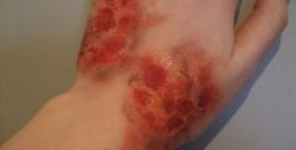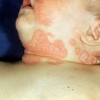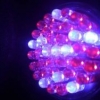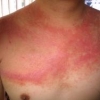Rischi a lungo termine della fototerapia neonatale con luce blu
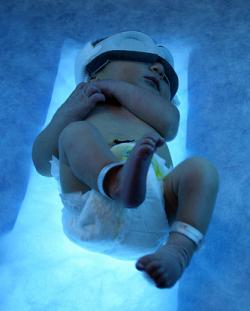 La fototerapia con luce blu (BL) è stata per decenni uno strumento terapeutico essenziale nella gestione dell'ittero neonatale: è solo raramente accompagnata da effetti collaterali sistemici e dermatologici acuti, e fortunatamente questi sono reversibili; inoltre, può essere adeguatamente e tempestivamente utilizzata nella pratica neonatale di routine.
La fototerapia con luce blu (BL) è stata per decenni uno strumento terapeutico essenziale nella gestione dell'ittero neonatale: è solo raramente accompagnata da effetti collaterali sistemici e dermatologici acuti, e fortunatamente questi sono reversibili; inoltre, può essere adeguatamente e tempestivamente utilizzata nella pratica neonatale di routine.
Tuttavia si sa molto poco riguardo i potenziali effetti collaterali a lungo termine della fototerapia neonatale con luce blu (NBLP). Molti dati attualmente disponibili sul modo in cui NBLP influenza lo sviluppo dei nevi melanocitici (MN) sono tuttora controversi. I risultati di recenti indagini epidemiologiche ben progettate suggeriscono che NBLP potrebbe benissimo essere un fattore di rischio per la formazione di MN, e sottolineano la necessità di ulteriori studi in vivo e in vitro. NBLP è attualmente il pilastro del trattamento dell'ittero neonatale, ma in futuro dovrebbe essere posta maggiore attenzione ai suoi effetti collaterali di lungo termine. Dovrebbero essere sempre seguite le linee guida cliniche e un rigoroso monitoraggio della gestione dell'iper-bilirubinemia, così da evitare un inutile e prolungato trattamento per i neonati.
Storia della pubblicazione:
Titolo: Long-term hazards of neonatal blue light phototherapy
Rivista: British Journal of Dermatology. doi: 10.1111/bjd.12335
Autori: J. Oláh, E. Tóth-Molnár, L. Kemény, Z. Csoma
Affiliazioni:Department of Dermatology and Allergology, University of Szeged, Hungary Department of Ophthalmology, Szeged, Hungary Dermatological Research Group of the Hungarian Academy of Sciences, University of Szeged, Hungary
Abstract:
Blue light (BL) phototherapy has been an essential therapeutic tool in the management of neonatal jaundice for decades. It is rarely accompanied by acute dermatological and systemic side-effects, but fortunately these are reversible, and can be adequately and promptly treated in routine neonatal practice. In contrast, much less is known about the potential long-term side-effects of neonatal blue light phototherapy (NBLP). Many of the data that are currently available on how NBLP influences melanocytic naevus (MN) development are controversial. The results of recent well-designed epidemiological surveys suggest that NBLP could well be a risk factor for MN formation, and highlight the need for additional in vivo and in vitro studies. NBLP is at present the mainstay of the treatment of neonatal jaundice, but in the future greater consideration should be given to its long-term side-effects when phototherapy is indicated. It is relevant to emphasize the importance of appropriately restricted and adequate clinical guidelines, and strict monitoring of the management of hyperbilirubinaemia, in order to avoid the unnecessary overtreatment of newborn infants.
